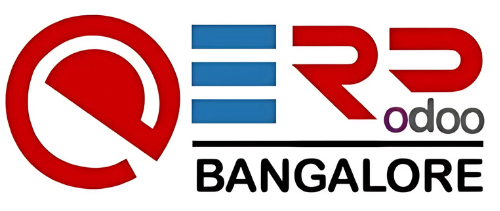Table of Contents
ToggleIntroduction
Definition of Win-Loss Ratio:

The win-loss ratio is a metric utilized to gauge the efficacy of a company’s sales endeavors. It quantifies the ratio between the number of successful deals won by the company and the number of unsuccessful deals lost within a specified timeframe. Essentially, it encapsulates the conversion prowess of a company’s sales pipeline, elucidating its ability to translate leads into lucrative business transactions.
Importance of Win-Loss Ratio:

The significance of the win-loss ratio cannot be overstated, as it serves as a barometer of a company’s sales performance and market competitiveness. A high win-loss ratio is indicative of a robust sales process, wherein a significant proportion of leads are successfully converted into customers. Conversely, a low win-loss ratio may raise red flags, suggesting deficiencies or inefficiencies within the sales ecosystem. By meticulously monitoring this metric, organizations can pinpoint areas of improvement and refine their sales strategies to bolster overall performance.
Strategic Insights Derived from Win-Loss Data:

Beyond its numerical representation, the win-loss ratio harbors invaluable strategic insights that can inform critical business decisions. Analysis of win-loss data unveils intricate patterns and trends pertaining to customer preferences, competitive positioning, product-market fit, and sales team efficacy. By discerning the underlying factors contributing to both wins and losses, organizations can fine-tune their value propositions, tailor their offerings to align with market demand, and fortify their competitive edge.
Customer Preferences:
Win-loss analysis unveils invaluable insights into customer preferences and pain points. By scrutinizing the reasons behind both successful conversions and lost opportunities, businesses can discern patterns in customer behavior, preferences, and objections. This granular understanding enables organizations to tailor their offerings to address specific customer needs, thereby enhancing their appeal and increasing conversion rates.
Competitive Positioning:
The win-loss ratio offers a window into the competitive landscape, allowing organizations to benchmark their performance against industry rivals. By analyzing win-loss data in conjunction with competitor intelligence, companies can identify areas where they outperform their peers and areas where they lag behind. This strategic reconnaissance empowers businesses to refine their competitive positioning, differentiate their offerings, and capitalize on untapped market opportunities.
Product-Market Fit:
A comprehensive win-loss analysis sheds light on the alignment between a company’s products or services and the prevailing market demands. By scrutinizing the reasons underlying both successful wins and losses, organizations can ascertain whether their offerings resonate with target customers. This insight facilitates product refinement, innovation, and adaptation to evolving market dynamics, thereby ensuring sustained relevance and market traction.
Sales Team Performance:
The win-loss ratio serves as a performance barometer for the sales team, illuminating areas of strength and weakness within the sales process. By dissecting win-loss data, businesses can evaluate the efficacy of their sales strategies, tactics, and execution. This diagnostic analysis enables organizations to identify bottlenecks, gaps in sales training, or areas requiring additional resources or support. By equipping sales teams with actionable insights derived from win-loss analysis, businesses can enhance sales effectiveness, optimize resource allocation, and drive bottom-line results.
The win-loss ratio stands as a quintessential metric for evaluating a company’s sales performance and market competitiveness. Its nuanced analysis unveils invaluable insights into customer preferences, competitive positioning, product-market fit, and sales team efficacy.
Leveraging Odoo for Win-Loss Analysis:
Odoo CRM:
Odoo CRM stands out as a comprehensive solution for managing customer relationships throughout the sales pipeline. With its integrated CRM module, Odoo offers a seamless platform for tracking leads, managing opportunities, and nurturing customer interactions. This unified system ensures that sales teams have all the necessary information at their fingertips to effectively engage with prospects and drive conversions.
Data Collection:
One of the key advantages of utilizing Odoo for win-loss analysis is its robust data collection capabilities. Through customizable fields and tags, users can capture a wealth of information about each deal, providing valuable insights into the sales process. This includes details such as lead source, deal stage, competitor information, and most importantly, reasons for both wins and losses. By systematically recording this data within Odoo CRM, organizations can build a comprehensive database that serves as the foundation for insightful analysis.
Reporting and Analytics:
Odoo’s reporting and analytics tools are instrumental in transforming raw data into actionable insights. The platform offers built-in reporting features and customizable dashboards that enable users to visualize win-loss data in real-time. From tracking trends over time to identifying patterns or outliers, Odoo equips businesses with the tools they need to make informed decisions. Whether it’s assessing the effectiveness of different sales strategies or pinpointing areas for improvement, Odoo’s reporting capabilities empower organizations to continuously refine their approach and drive better results.
Win-loss analysis is a cornerstone of effective sales management, providing invaluable feedback for optimizing strategies and maximizing performance. By leveraging Odoo CRM, businesses can streamline the process of win-loss analysis, ensuring that teams have access to comprehensive data and actionable insights. From data collection to reporting and analytics, Odoo offers a powerful suite of tools that enable organizations to gain deeper visibility into their sales processes and make informed decisions that drive success.
Key Metrics to Track:
-
Win Rate: The Essence of Success
At the heart of sales performance evaluation lies the Win Rate, a fundamental metric that measures the percentage of won deals out of total opportunities. Calculated by dividing the number of won deals by the total number of opportunities and multiplying by 100, Win Rate offers a clear snapshot of a sales team’s effectiveness in converting leads into customers. A high Win Rate signifies efficient sales processes, compelling value propositions, and adept salesmanship. Conversely, a low Win Rate warrants a critical examination of sales strategies, customer targeting, and product-market fit.
-
Loss Rate: Learning from Setbacks
Complementing the Win Rate is its counterpart, the Loss Rate, which quantifies the percentage of lost deals out of total opportunities. Loss Rate serves as a sobering reminder of the challenges inherent in sales endeavors and underscores the importance of resilience and adaptability. By dissecting the reasons behind lost opportunities, sales teams can pinpoint weaknesses in their approach, refine their tactics, and mitigate future losses. Embracing failure as a learning opportunity is key to nurturing a culture of continuous improvement within the sales ecosystem.
-
Average Sales Cycle Length: Time as a Crucial Factor
In the fast-paced world of sales, time is of the essence. The Average Sales Cycle Length denotes the average duration it takes to close a deal from initial contact to final decision. Tracking this metric provides valuable insights into the efficiency of sales pipelines, customer engagement strategies, and deal-nurturing processes. A shorter sales cycle often translates to higher productivity, increased revenue, and enhanced customer satisfaction. Conversely, a protracted sales cycle may indicate bottlenecks in the sales process, customer indecision, or inadequate lead qualification.
-
Deal Size: Quantifying Value
In the pursuit of profitability, the magnitude of each deal holds significant importance. Deal Size refers to the average value of won deals compared to lost deals, providing insights into the revenue-generating potential of different sales opportunities. Analyzing variations in deal sizes enables sales teams to prioritize high-value prospects, tailor their offerings to meet customer needs, and maximize revenue generation. Moreover, tracking deal sizes facilitates benchmarking against industry standards and competitor performance, guiding strategic pricing and packaging decisions.
-
Win-Loss Reasons: Unveiling Insights
Beyond numerical metrics, understanding the underlying reasons behind both wins and losses is crucial for refining sales strategies and enhancing performance. By categorizing and analyzing Win-Loss Reasons, sales teams can identify common themes, discern customer preferences, and unearth actionable insights. Whether it be competitive pricing, product features, customer service, or market dynamics, each win or loss offers valuable feedback that informs strategic decision-making and fosters continuous refinement of sales approaches.
In the competitive landscape of sales, success hinges on the ability to track, analyze, and leverage key metrics effectively. From Win Rate and Loss Rate to Average Sales Cycle Length, Deal Size, and Win-Loss Reasons, each metric offers unique perspectives that guide sales performance optimization.
Analyzing Win-Loss Patterns:
Customer Segmentation:
Examining win-loss data across various customer segments enables businesses to pinpoint where their sales efforts are most effective. By categorizing customers based on demographics, industries, or geographic regions, companies can identify patterns in successful conversions. For instance, they may discover that a particular product resonates more with customers in a specific industry or region, prompting them to tailor their marketing and sales approaches accordingly. Additionally, analyzing win-loss data by customer segment helps identify untapped market opportunities and prioritize resource allocation for maximum impact.
Competitor Analysis:
Understanding the role of competitor activity in influencing win-loss outcomes is crucial for developing a robust competitive strategy. By analyzing win-loss reasons associated with competitor actions, businesses can gain insights into their own strengths and weaknesses relative to competitors. For instance, they may uncover instances where competitors offer more competitive pricing, superior product features, or better customer support, leading to lost deals. Conversely, businesses can identify areas where they outperform competitors and leverage these strengths to gain a competitive advantage. This analysis informs strategic decisions such as pricing adjustments, product enhancements, or targeted marketing campaigns aimed at countering competitor offerings.
Customer Preferences:
Win-loss analysis unveils invaluable insights into customer preferences and pain points. By scrutinizing the reasons behind both successful conversions and lost opportunities, businesses can discern patterns in customer behavior, preferences, and objections. This granular understanding enables organizations to tailor their offerings to address specific customer needs, thereby enhancing their appeal and increasing conversion rates.
Product Performance:
Evaluating win-loss data by product or service offerings provides invaluable insights into customer preferences and satisfaction levels. By identifying which offerings consistently lead to wins and which ones result in losses, businesses can refine their product development strategies and prioritize investments in areas with the highest potential for success. For example, they may discover that certain product features are highly valued by customers, driving sales success, while other features may be perceived as lacking or unnecessary, leading to lost opportunities. Armed with this knowledge, companies can iterate on their offerings, address customer pain points, and stay ahead of evolving market demands.
Analyzing win-loss patterns empowers businesses to optimize their sales and marketing strategies, strengthen their competitive position, and enhance product offerings. By leveraging insights derived from customer segmentation, competitor analysis, and product performance evaluation, companies can drive sustainable growth and achieve long-term success in the marketplace.
Strategies for Improving Win-Loss Ratio:
Sales Training and Coaching
One of the fundamental pillars of improving the win-loss ratio is investing in the continuous development of the sales team through training and coaching programs. Sales training should focus on enhancing selling skills, objection handling techniques, and negotiation tactics. By equipping sales representatives with the necessary knowledge and skills, they can engage more effectively with prospects, address their concerns, and ultimately close more deals. Moreover, coaching sessions provide personalized guidance and feedback, allowing sales professionals to refine their approach and adapt to changing market conditions.
Customer Feedback
Understanding the reasons behind lost opportunities is crucial for identifying areas of improvement and making informed strategic decisions. Soliciting feedback from prospects who chose a competitor or decided not to proceed with a purchase provides valuable insights into potential weaknesses in the sales process or product offering. By actively seeking feedback, businesses can uncover recurring themes or pain points that may be hindering their ability to win deals. This information can then be used to tailor sales strategies, refine product offerings, or address specific customer concerns, thereby increasing the likelihood of success in future sales interactions.
Pricing Optimization
Pricing plays a significant role in influencing purchase decisions and directly impacts the win-loss ratio. Businesses must evaluate their pricing strategies regularly to ensure they remain competitive in the market while also delivering value to customers. This requires a comprehensive analysis of market demand, competitor pricing, and customer perception of value. Pricing optimization efforts may involve adjusting price points, introducing tiered pricing structures, or offering bundled packages to better align with customer preferences and maximize profitability. By optimizing pricing strategies, businesses can enhance their competitive position and increase their win rate against competitors.
Process Optimization
Streamlining sales processes is essential for improving efficiency and responsiveness, both of which contribute to a higher win-loss ratio. Identifying and eliminating bottlenecks in the sales pipeline, automating repetitive tasks, and implementing technology solutions can significantly enhance the productivity of the sales team. By streamlining processes, sales representatives can focus their time and energy on activities that directly contribute to closing deals, such as prospecting, nurturing leads, and engaging with potential customers. Additionally, improved process efficiency enables faster response times to customer inquiries and reduces the likelihood of deals stalling or falling through due to delays or administrative errors.
Continuous Improvement
Achieving and maintaining a high win-loss ratio requires a commitment to continuous improvement and learning. Businesses should adopt a proactive approach to analyzing win-loss data, identifying trends, and experimenting with new strategies to optimize their sales performance continually. Regularly reviewing win-loss data allows businesses to identify patterns or areas of concern and take corrective action accordingly. Experimenting with new sales tactics, messaging strategies, or marketing campaigns enables businesses to adapt to changing market dynamics and stay ahead of the competition. By fostering a culture of continuous improvement, businesses can iterate on their sales strategies based on real-time feedback and insights, ultimately leading to a higher win-loss ratio and sustained business growth.
Improving the win-loss ratio requires a multifaceted approach that addresses various aspects of the sales process, from training and coaching to pricing optimization and process efficiency. By investing in sales training and coaching, soliciting customer feedback, optimizing pricing strategies, streamlining sales processes, and fostering a culture of continuous improvement, businesses can enhance their competitiveness and increase their win rate against competitors.
Implementing Actionable Insights in Odoo:
Configure Custom Reports:
Customize Odoo’s reporting and dashboard features to showcase crucial win-loss metrics and insights. Tailor reports to highlight key performance indicators (KPIs), such as sales conversion rates, customer acquisition costs, and revenue trends. By presenting data in a visually intuitive format, stakeholders can quickly grasp vital information, enabling timely strategic adjustments and resource allocations.
Workflow Automation:
Capitalize on Odoo’s workflow automation capabilities to streamline critical processes, including lead qualification, opportunity management, and follow-up procedures. Implement automated workflows to assign tasks, trigger notifications, and escalate actions based on predefined criteria. By automating routine tasks, teams can focus their efforts on high-value activities, accelerating the sales cycle and improving overall productivity.
Integration with External Tools:
Extend Odoo’s analytical capabilities by integrating it with external analytics tools or business intelligence (BI) platforms. Seamlessly connect Odoo to popular BI solutions such as Tableau, Power BI, or Google Data Studio to unlock advanced data analysis and visualization functionalities. By consolidating data from multiple sources, organizations gain deeper insights into market trends, customer behavior, and operational performance, facilitating data-driven decision-making across departments.
Implementing actionable insights in Odoo empowers organizations to make informed decisions, drive operational excellence, and gain a competitive edge in today’s rapidly evolving business landscape. By configuring custom reports, automating workflows, and integrating external tools, businesses can harness the full potential of Odoo’s capabilities to transform raw data into actionable intelligence, fueling growth and success.
Conclusion:
In the dynamic and competitive landscape of modern business, understanding and optimizing your win-loss ratio is essential for driving sustainable growth and success. By leveraging the powerful capabilities of Odoo for win-loss analysis, businesses can gain actionable insights into their sales performance, identify areas for improvement, and implement strategies to enhance their competitive advantage.
Faqs
- How do I access the win-loss ratio feature in Odoo?
In Odoo, you can typically access the win-loss ratio feature through the reporting or analytics section of the sales module. It may vary slightly depending on the version and configuration.
- Can I customize the time frame for calculating the win-loss ratio in Odoo?
Yes, Odoo usually allows users to customize the time frame for calculating win-loss ratio, enabling analysis over specific periods such as weeks, months, quarters, or years.
- What insights can I derive from monitoring win-loss ratio in Odoo?
Monitoring win-loss ratio can provide insights into the effectiveness of sales strategies, product competitiveness, customer preferences, and areas needing improvement.
- Does Odoo offer graphical representations of win-loss ratio data?
Yes, Odoo often provides graphical representations such as charts and graphs to visualize win-loss ratio data, facilitating easier interpretation and analysis.
- Can I filter win-loss ratio data based on specific criteria in Odoo?
Yes, Odoo typically allows users to filter win-loss ratio data based on various criteria such as salesperson, product category, customer segment, or geographical region.
- How frequently should I check the win-loss ratio in Odoo?
The frequency of checking win-loss ratio may vary depending on business needs, but it’s generally recommended to monitor it regularly, such as weekly or monthly, to track trends and make timely adjustments.
- Is there a way to compare win-loss ratios across different teams or individuals in Odoo?
Yes, Odoo often provides functionality to compare win-loss ratios across different teams, salespersons, or individuals, enabling performance benchmarking and identification of top performers.
- What actions can I take based on insights from the win-loss ratio in Odoo?
Insights from the win-loss ratio can drive various actions such as refining sales strategies, improving product offerings, providing additional training to sales teams, or targeting specific customer segments more effectively.
- Can I export win-loss ratio data from Odoo for further analysis?
Yes, Odoo typically allows users to export win-loss ratio data in various formats such as CSV or Excel, facilitating further analysis or integration with other tools.
- Does Odoo provide historical win-loss ratio data for comparison?
Yes, Odoo often retains historical win-loss ratio data, allowing users to compare current performance with past periods and identify trends or patterns.
- Are there any automated alerts or notifications available for significant changes in win-loss ratio?
Depending on the configuration, Odoo may offer automated alerts or notifications for significant changes in win-loss ratio, helping users stay informed about critical developments.
- Can I drill down into individual deals to understand the factors contributing to wins or losses in Odoo?
Yes, Odoo typically allows users to drill down into individual deals to analyze factors contributing to wins or losses, such as deal size, duration, customer interactions, or competitor activities.



